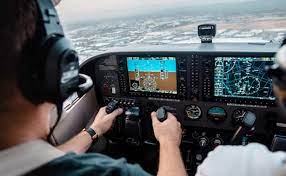What Takes Place If A Pilot Slumbers During A Flight
A driver falling asleep while driving a bus or a vehicle may cause an accident. But imagine what would happen if the pilot of a plane traveling at 33,000 feet slept out. In a recent occurrence, an Ethiopian Airlines pilot fell asleep while flying at a height of 37,000 feet above Addis Abeba, Ethiopia. He was in such a deep sleep that he ignored the air traffic controllers’ warnings.
In such a circumstance, you may predict that the aircraft would crash, but that is not the case. The airplane normally switches to autopilot mode when a pilot nods off, enabling it to fly independently based on pre-programmed instructions.
Whether or whether pilots are allowed to snooze during flights is a common question. In actuality, long-haul flights and sometimes short-haul ones as well, if weariness sets in, let pilots to take a break. Although there are stringent rules in place, air traffic control continuously monitors the aircraft, giving their orders high priority.
Modern airplanes include an autopilot mode that may be activated when certain circumstances are fulfilled. Pilots often use autopilot when the weather is clear and safe, after reaching a certain height following departure. Once engaged, the autopilot assumes control, leaving the pilots to mostly observe the flight of the aircraft. In these situations, the computer system will direct the aircraft to its destination while the pilots may take brief naps or even experience profound sleep during lengthy trips.
Before arriving at the target airport, the pilot must disengage the autopilot; otherwise, a hooter, a loud warning alert, will begin to sound in the cockpit. The purpose of this warning is to inform the pilot that the aircraft has arrived at its destination. Air traffic control furthermore issues frequent alerts. Pilots immediately recover control of the aircraft after hearing the hooter. However, it’s essential since giving the aircraft the wrong orders when it’s in autopilot mode might cause it to err and be dangerous.
A staggering 66% of the 542 regional, local, and international pilots who participated in the Safety Matters Foundation survey in India acknowledged to dozing off in the pilot’s seat without waking up a crew member. Airlines in India need up to 1,500 new pilots yearly, and there is a severe lack of competent pilots in the country. Only 200 to 300 of these new workers, or a small portion, have the necessary education and experience.







